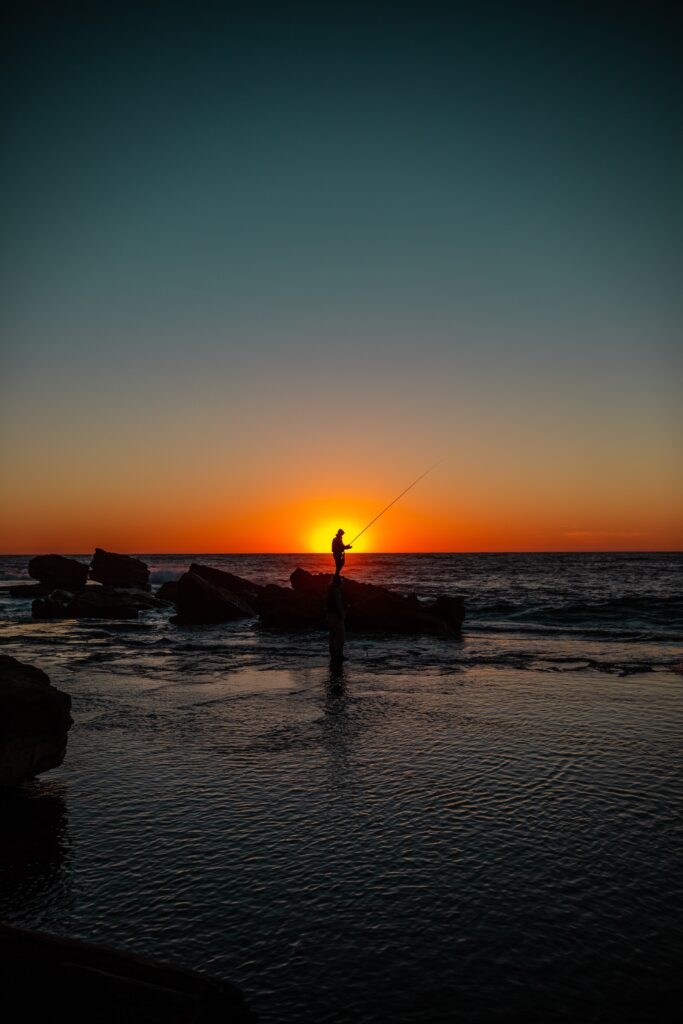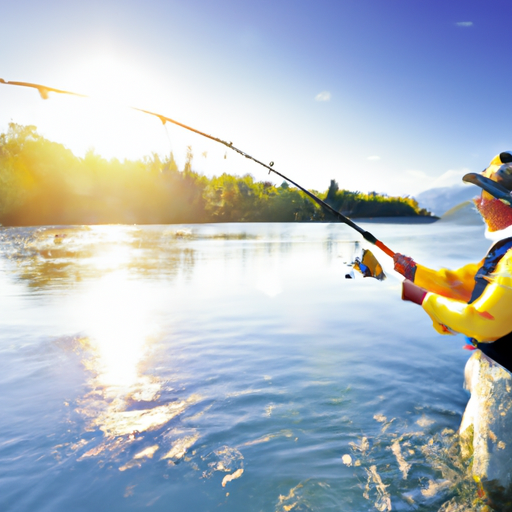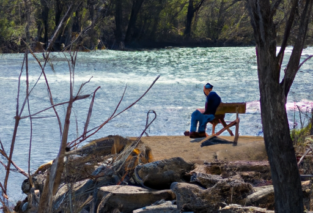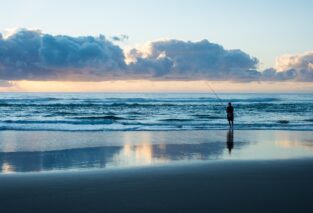If you’ve always dreamt of embarking on a thrilling salmon fishing adventure, then “Can You Go Salmon Fishing: Tips and Techniques for Salmon Anglers” is the ultimate guidebook for you. Packed with valuable insights and expert advice, this comprehensive resource will equip both beginners and seasoned anglers with the skills and knowledge needed to successfully navigate the world of salmon fishing. From selecting the right equipment to mastering various fishing techniques, this book is your trusted companion in unlocking the secrets of this exhilarating sport. Get ready to cast your line and reel in the majestic salmon of your dreams!

Choosing the Right Location for Salmon Fishing
When it comes to salmon fishing, choosing the right location is crucial for a successful fishing trip. Researching top salmon fishing spots can greatly increase your chances of reeling in a big catch. Start by asking experienced anglers or checking out local fishing forums to gather information about popular salmon fishing destinations.
Consider the water conditions of your chosen fishing spot. Different species of salmon prefer different types of water, so understanding water conditions is important. Factors to consider include water temperature, clarity, and current strength. Researching these conditions will help you determine the best time to fish and the most effective techniques to use.
Understanding salmon migration patterns is another key factor in selecting the right location for salmon fishing. Salmon migrate from the ocean to their natal rivers or streams to spawn, and understanding their migration patterns will give you insight into their behavior and whereabouts. Research the specific species of salmon you are targeting and learn about their migration routes to have the best chance of success.
Essential Gear and Equipment for Salmon Fishing
Having the right gear and equipment is essential for a successful salmon fishing trip. Selecting the right fishing rod and reel is a crucial first step. Choose a rod that is strong and durable, capable of handling the weight and strength of a salmon. Pair it with a reliable reel that provides smooth and consistent drag.
Choosing the proper fishing line strength is also important. Salmon are known for their remarkable strength and fighting ability, so using a high-quality fishing line that can withstand their powerful runs is a must. Consider using a braided line or a monofilament line with a higher pound test rating to ensure you have the strength to land your catch.
Essential terminal tackle for salmon fishing includes hooks, swivels, and weights. Use strong and sharp hooks that are appropriate for the size of the salmon you are targeting. Swivels are important to prevent line twists and tangles, while weights help you control the depth at which your bait or lure is presented to the fish.

Understanding Salmon Behavior and Feeding Habits
To become a successful salmon angler, it is crucial to understand salmon behavior and feeding habits. There are different species of salmon, each with their own unique characteristics. Learning about these different species will help you tailor your fishing techniques and increase your chances of success.
Knowing when and where to find salmon is key. Salmon are highly migratory fish, and their movements are influenced by factors such as water temperature, food availability, and spawning cycles. Researching the specific species you are targeting will give you insight into their preferred habitats and the best time of year to find them in abundance.
Understanding salmon feeding patterns is also important for a successful fishing trip. Salmon feed heavily before they migrate upstream to spawn, so fishing during their feeding periods increases your chances of attracting and catching them. Research the typical feeding behavior of the salmon species you are targeting to determine the best time of day and the most effective techniques for enticing them to bite.
Mastering Salmon Fishing Techniques
Mastering various salmon fishing techniques will greatly improve your chances of success on the water. Trolling for salmon is a popular technique that involves trailing bait or lures behind a moving boat. Adjusting the trolling speed and depth can help you target different depths where salmon are feeding.
Using casting and retrieving techniques is another effective way to catch salmon. Cast your bait or lure upstream and allow it to drift naturally downstream while reeling in steadily or using intermittent retrieves. This technique mimics the movement of a swimming fish and can entice aggressive strikes from salmon.
Effective fly fishing for salmon requires skill and finesse. Casting a well-presented fly to mimic the appearance and movement of natural prey can be highly effective. Research the types of flies that are known to attract salmon and practice your casting and retrieval techniques to master this challenging but rewarding method.

Bait and Lure Selection for Salmon Fishing
Choosing the right bait and lures is crucial for enticing salmon to bite. Using live bait, such as salmon roe or herring, can be highly effective. The scent and movement of live bait can be irresistible to hungry salmon. Make sure to use appropriate bait rigs and hooks when fishing with live bait.
Selecting the perfect lures for salmon can also yield excellent results. Popular lure types for salmon fishing include spoons, spinners, and plugs. These lures mimic the appearance and movement of baitfish and can trigger aggressive strikes from salmon. Experimenting with different colors and sizes to match the fish’s preferences in your chosen fishing spot.
Considering scents and attractants can further enhance your chances of success. Salmon are attracted to certain scents, such as anise or shrimp, which can be applied to your bait or lures to make them more enticing. Additionally, using attractant oils or gels can help create a scent trail that draws salmon towards your fishing area.
Best Times of Year for Salmon Fishing
Identifying peak salmon runs is crucial for planning a successful fishing trip. Salmon runs are periods when large numbers of salmon migrate from the ocean to their spawning grounds. Researching the typical timing of these runs in your chosen fishing spot will help you plan your trip and increase your chances of encountering a high concentration of fish.
Understanding seasonal changes in salmon behavior is also important. Different seasons bring changes in water temperature, food availability, and spawning cycles, which directly affect salmon behavior. Research the seasonal patterns of the specific salmon species you are targeting to determine the best time of year to fish and tailor your techniques accordingly.
Planning fishing trips around migration is key to maximizing your chances of success. As salmon migrate to and from their spawning grounds, they pass through various stages and locations. By researching the migration routes and timing of the salmon species you are targeting, you can plan your fishing trips to coincide with their movements, increasing your chances of encountering active and feeding fish.

Tips for Salmon Fishing in Different Weather Conditions
Salmon fishing can be enjoyed in various weather conditions, and understanding how to adapt to different weather scenarios can greatly improve your success on the water. Fishing in sunny weather requires some adjustments, such as using lighter and more natural-colored bait and lures. Salmon can be more skittish in bright sunlight, so presenting your offerings naturally and stealthily can yield better results.
Rainy days can provide excellent fishing opportunities, as the rain triggers increased salmon activity. During rainy weather, salmon are less cautious and more likely to aggressively pursue your bait or lures. Take advantage of the increased activity by using brighter and more vibrant-colored bait and lures that stand out in the murky water.
Adapting to windy and stormy conditions is essential for a safe and successful fishing trip. In windy conditions, focus on fishing in protected areas, such as coves or behind land formations, where the water is calmer. Adjust your casting techniques to accommodate for the wind direction and intensity. When fishing in stormy conditions, prioritize your safety and avoid fishing in open water as it can be dangerous. Consider rescheduling your trip for safer weather conditions or seek shelter until the storm passes.
Safety Tips and Regulations for Salmon Fishing
When it comes to salmon fishing, safety should always be a top priority. Knowing and complying with fishing regulations is crucial to protect the salmon population and preserve the ecosystem. Ensure you have the necessary fishing licenses and adhere to catch limits, size restrictions, and fishing season regulations. Familiarize yourself with local fishing regulations to avoid any legal consequences and contribute to sustainable fishing practices.
Wearing the appropriate safety gear is also essential. A properly fitted personal flotation device (PFD) is a must when fishing from a boat, as it can save your life in case of an accident or emergency. Additionally, wearing proper footwear with good grip will minimize the risk of slips or falls on slippery surfaces such as boat decks or riverbanks.
Being aware of potential hazards is crucial for ensuring a safe fishing experience. Sharp fishing hooks, slippery rocks, and unpredictable weather conditions can pose risks. Take precautions such as handling hooks with care, maintaining good footing on slippery surfaces, and monitoring weather conditions. Always fish with a buddy or inform someone of your fishing plans, especially when venturing to remote or unfamiliar locations.

Cleaning and Preparing Your Catch
Properly gutting and cleaning your salmon is essential to preserve its quality and freshness. Start by removing the entrails and rinsing the fish with clean water. Use a sharp knife to fillet the fish, removing the skin and bones for a boneless fillet. Rinse the fillets once again to remove any remaining blood or debris.
Preserving and storing fresh salmon is important to maintain its flavor and texture. After cleaning, place the fillets in a sealed container or vacuum-sealed bags. Store them in a cool environment, such as a refrigerator or cooler with ice, to prevent spoilage. Freshly caught salmon should be consumed within a few days or frozen for long-term storage.
Favorite salmon recipes and cooking techniques can elevate your culinary experience. Grilling, baking, or smoking salmon are popular cooking methods that bring out its natural flavors. From simple seasoning with salt and pepper to marinating with herbs and spices, there are endless possibilities for creating delicious salmon dishes. Experiment with different recipes and cooking techniques to find your favorite way of enjoying your freshly caught salmon.
Conservation and Sustainable Practices
Understanding the importance of salmon conservation is crucial for responsible anglers. Salmon play a vital role in the ecosystem, providing food for various species and contributing to overall biodiversity. By practicing catch and release, you can help conserve salmon populations for future generations.
When practicing catch and release, handle the fish with care, minimizing stress and injury. Use barbless hooks to make hook removal easier and reduce harm to the fish. Release the fish gently, making sure it has fully recovered before letting it swim away. Additionally, avoid fishing during sensitive spawning periods or in protected areas to further protect the salmon population.
Supporting sustainable fishing practices is another way to contribute to salmon conservation. Choose fishing guides or charter services that prioritize sustainable fishing methods and follow regulations. Educate yourself and others about the importance of responsible angling, spreading awareness about the need to protect salmon habitats and ecosystems.
In conclusion, salmon fishing requires careful planning, the right equipment, and an understanding of salmon behavior and habitat. By choosing the right location, equipping yourself with the essential gear, mastering fishing techniques, and adhering to safety regulations, you can increase your chances of a successful and enjoyable salmon fishing experience. Remember to practice catch and release and support sustainable fishing practices to help conserve salmon populations for future generations. Happy fishing!





